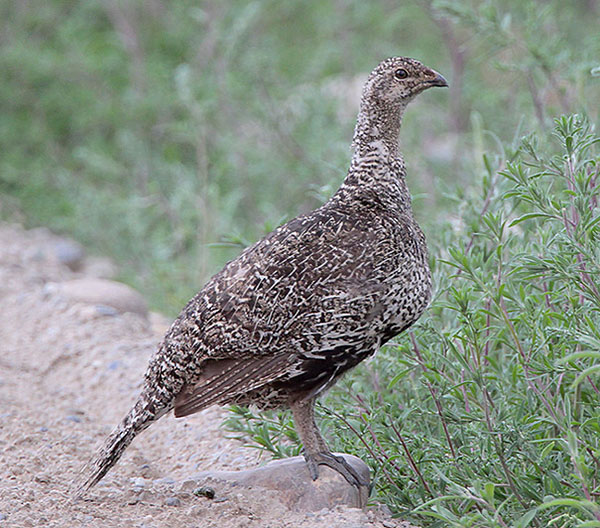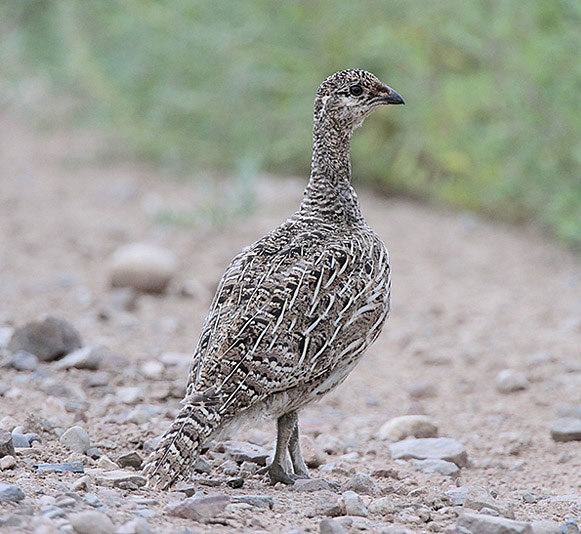While Gunnison Sage-Grouse eat insects, flowers, fruits, and buds, sagebrush leaves are their main food throughout the year. Certain kinds of sagebrush are higher in protein and lower in toxins, and so are preferred by Gunnison Sage-Grouse as food sources.
Sage-grouse can fly nearly 50 miles per hour, and can travel several miles at a time if needed. A variety of raptors have been recorded as capturing sage-grouse, though their large size makes them a difficult target. Smaller, very young birds are more vulnerable, even to a small raptor such as a kestrel.
Length: 18-22 inches
Wing span: 26-30 inches
On this page
Description of the Gunnison Sage-Grouse
BREEDING MALE
The Gunnison Sage-Grouse is a sagebrush grouse, with mostly brownish upperparts, a black belly, and a long tail.
Males have black throats and are much larger than females. They have a thick crest of filoplumes, and large, inflatable air sacs on the breast.
Female
Females have pale throats and are much smaller than females.
Seasonal change in appearance
None.
Juvenile
Juveniles resemble adult females.
Habitat
Gunnison Sage-Grouse inhabit sagebrush with interspersed forbs and grassy areas.
Diet
Gunnison Sage-Grouse eat sage leaves and insects.

Photograph © Greg Lavaty
Behavior
Gunnison Sage-Grouse forage on the ground.
Range
Gunnison Sage-Grouse are resident locally in a small portion of central Colorado and eastern Utah. The population is small and has declined dramatically in recent decades.
Fun Facts
Gunnison Sage-Grouse were only discovered to be a separate species in the 1990s, and their small, endangered population is declining. They were previously considered to be conspecific with Greater Sage-Grouse.
Gunnison Sage-Grouse produce about 9 plopping sounds during display, compared to 2 by Greater Sage-Grouse.
Vocalizations
Whooshing or plopping sounds are created during display. Cackles and clucking calls are also given.
Similar Species
- Greater Sage-Grouse are considerably larger and have less white in the tail.
Nesting
The Gunnison Sage-Grouse’s nest consists of a shallow depression lined with plant materials.
Number: Usually lay 7-9 eggs.
Color: Olive or buffy with darker markings.
Incubation and fledging:
The young hatch at about 25-27 days, and leave the nest shortly after hatching, though associating with the adults for some time.


